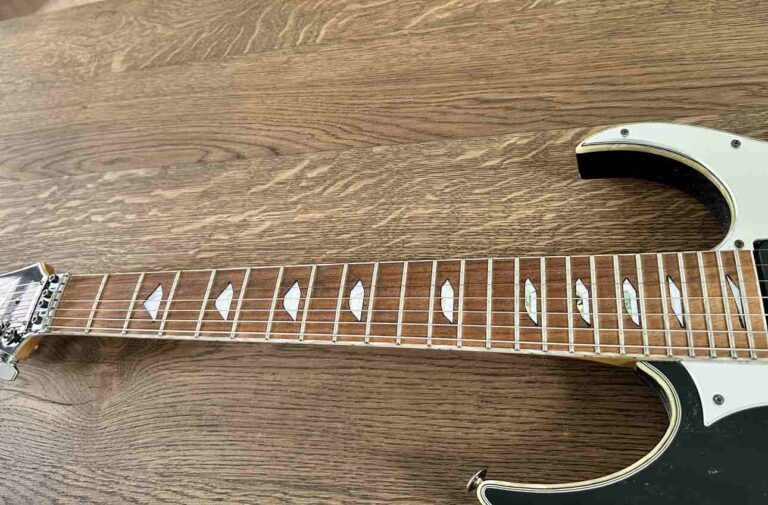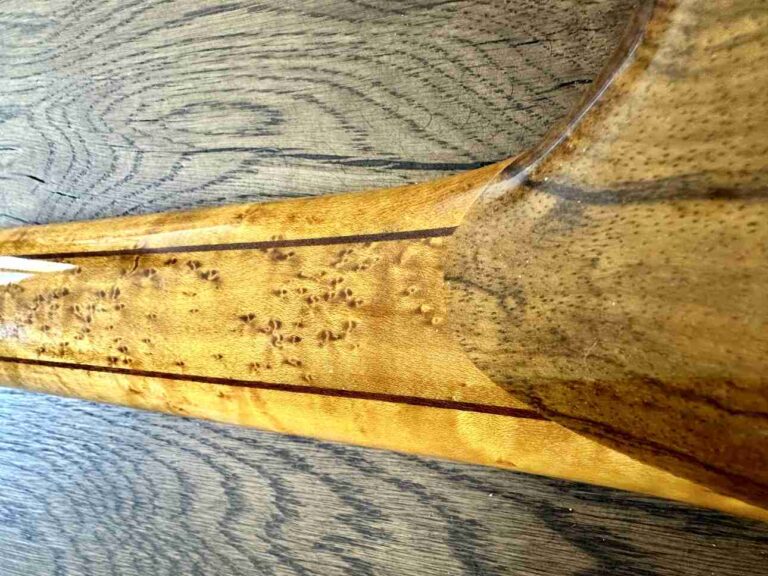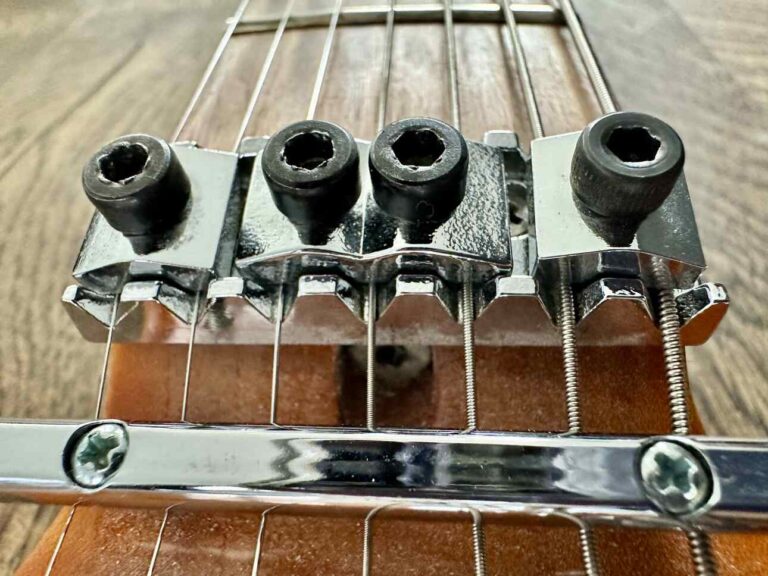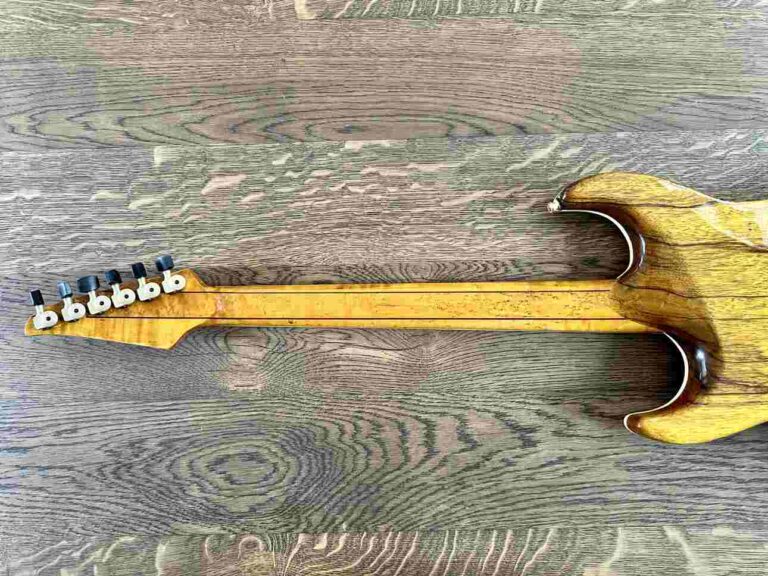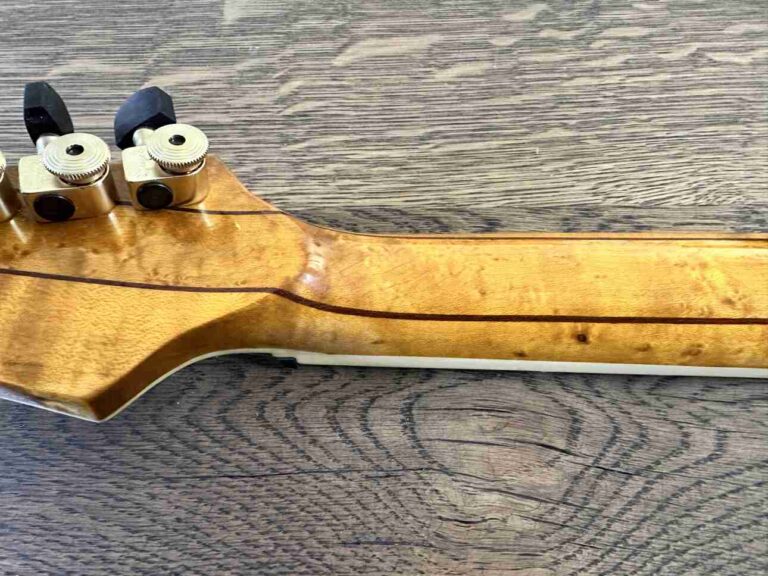Comprehensive Guide to Tonewood for Electric Guitars
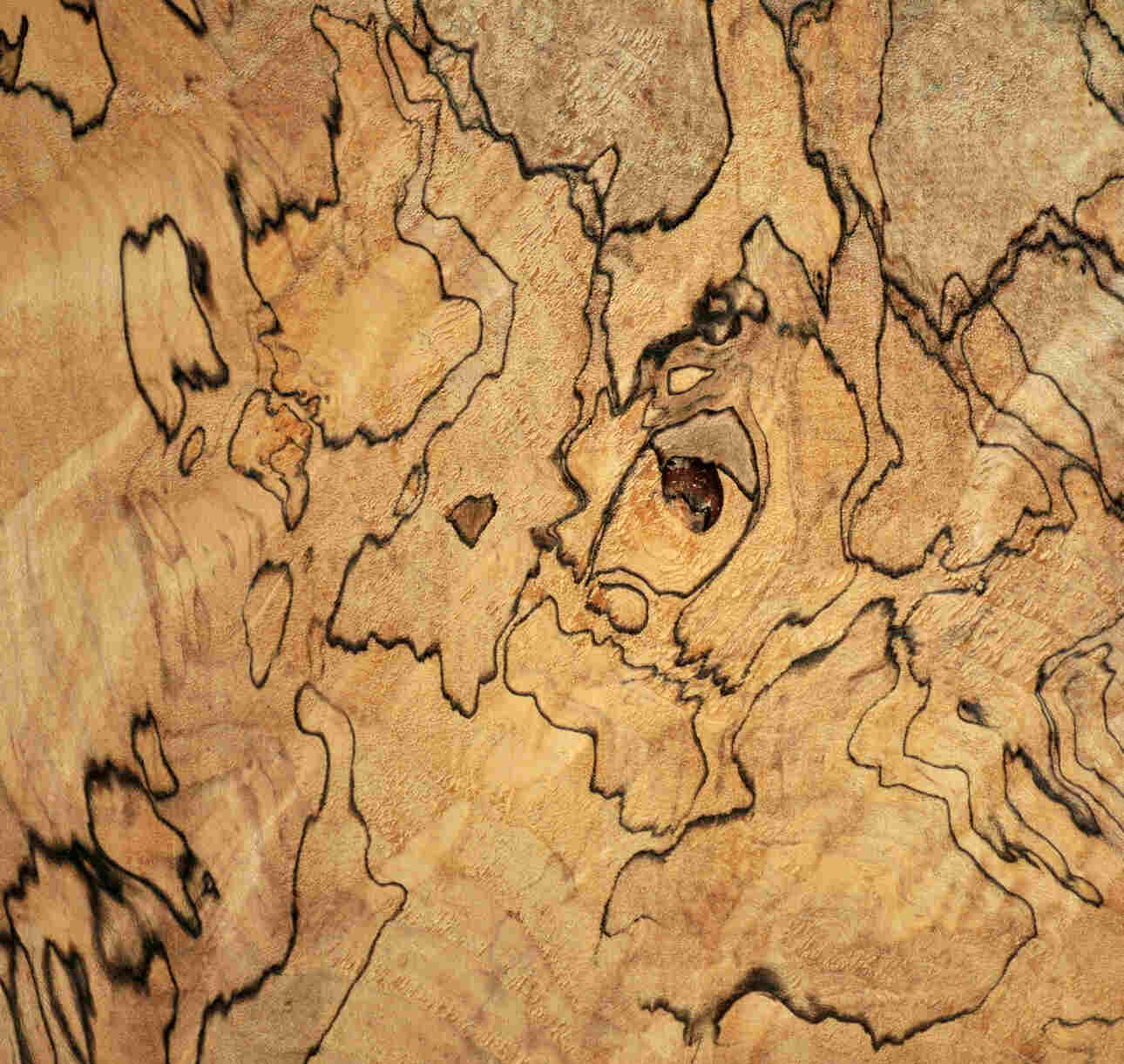
The wood of an electric guitar matters. Tonewoods shape your guitar’s body, neck, and fretboard. They affect the tone, sustain, and resonance. In this guide, you’ll find a comprehensive overview of all you need to know about this topic.
It’s good to know the traits of different tonewoods. Especially when you’re about to order a custom-made guitar.
If that’s you, I highly recommend reading this post. You’ll be armed with all the knowledge you need to choose the woods that fit your desired sound and have your dream guitar made for you!
Key Takeaways
- Tonewoods shape an electric guitar’s sound and performance;
- Each wood has its own sound, making choice important;
- Think about how the wood is treated, what the fretboard is made of, and where the wood comes from when picking your guitar’s tonewoods.
Understanding Tonewoods
Anatomy of Guitar Woods
The wood in electric guitars shapes their sound, feel, and look. These ‘tonewoods’ give guitars their unique tones.
Guitars have wood in the body, neck, and fretboard. The body is the largest and most important part of your guitar’s tone. Some common body woods are:
- Alder: Lightweight, balanced sound with good resonance;
- Mahogany: Warm, thick, and rich tones with excellent sustain;
- Ash: Provides a bright, punchy sound with a clear, solid tone.
The neck’s wood changes how the guitar plays and feels. Common neck woods are:
- Maple: Strong and dense, providing a bright sound and smooth playability;
- Rosewood: Known for its warm and rich feel, making playing comfortable.
The fretboard wood affects resonance, tone, and looks. Popular fretboard woods are:
- Rosewood: Provides warmth and richness, with solid low-end and full mid-range.
- Ebony: Dense and smooth surface, giving a bright sound and sleek look.
Tonal Characteristics of Woods
Knowing the characteristics of wood helps you pick the right guitar. Each wood has a unique sound. Here are the characteristics of common types of wood used for guitar manufacturing:
- Alder: Balanced across all frequencies with a slightly boosted mid-range, making it suitable for several music genres;
- Mahogany: Provides a warm and full sound emphasizing low-end and lower mid-range frequencies. Great for heavier music styles;
- Ash: Bright and punchy with a focused upper midrange and treble response. Suits rock and country music.
How Does Tonewood Affect Sound in Electric Guitars
Debate between Supporters and Opposers
There’s an ongoing debate about tonewood in electric guitars. Some say the wood type changes the tone. Others think wood changes little to nothing.
Tonewood supporters say each wood has a sound due to density, grain structure, and resonance. For example, mahogany is warm and rich. Maple is bright and clear.
Critics say pickups amplify the sound in electric guitars, not the wood. They think electronics and build matter more for tone.
Possible effects on electric guitars:
- Density: Denser woods can produce more sustain and a brighter tone;
- Grain structure: Different grain structures can affect how the wood vibrates and resonates;
- Resonance: Woods with better resonance can produce a clearer, more defined tone.
Selecting Tonewoods for Electric Guitars
As a guitarist, picking the right tonewoods for your electric guitar matters. It shapes the sound and feel of your instrument. Below, I’ll cover what to consider when choosing wood for the body and neck.
Body Wood Choices
Different woods are used for electric guitar bodies, each changing the sound and look. Here are some common choices:
- Alder: It’s liked for its even tone and low cost. Alder is light and resonates well;
- Ash: Used in expensive guitars, ash has a bright sound and lasts long. Swamp ash is lighter and has attractive grain;
- Basswood: It has a warm and soft tone in the midrange. It’s affordable and common in beginner guitars;
- Mahogany: A classic wood, mahogany has a warm, deep tone and good sustain. It’s heavier to hold.
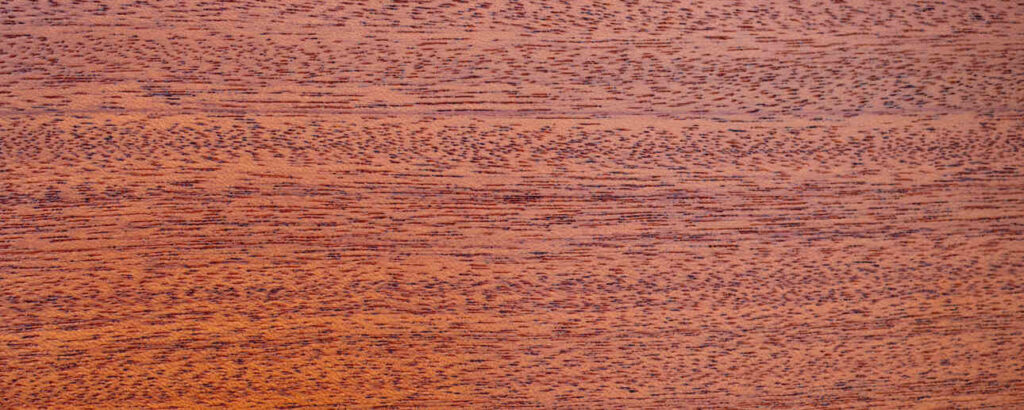
Neck Wood Considerations
Your electric guitar’s neck wood is key to its resonance, feel, and sound. Here are some usual neck wood choices:
- Maple: Bright and sharp, maple is favored for its firmness and lasting quality. It helps notes be clear and distinct;
- Mahogany: Known for warmth and richness, mahogany in a neck gives a comfortable feel while playing;
- Rosewood: Often on fretboards, rosewood is also used for necks. It’s heavy and dark, giving a soft, vintage tone.
There are many woods for guitar making. Choose a wood that sounds good to you.
Popular Electric Guitar Tonewood
Alder
Alder is a popular choice for electric guitars due to its well-balanced sound. With a strong midrange and solid lows, it produces a warm tone. It’s commonly used for Fender Stratocasters and produces a classic electric guitar sound.
Ash
Ash comes in two types – northern hard ash and swamp ash. Northern hard ash offers a bright, sustaining tone, while swamp ash provides a balanced tone with rich lows and clear highs. Both types are lightweight. This makes them ideal for a comfortable playing experience.
Basswood
Basswood is known for its warmth and smooth midrange. It’s an affordable choice, often found on budget guitars. The soft nature of basswood makes it easy to carve and shape. As a result, it’s popular among luthiers.
Bocote
Bocote is an exotic wood with a unique appearance and sound. It has a beautiful grain pattern. Its density offers a well-balanced tone with a strong midrange presence. As a less common wood, bocote guitars can be more expensive and harder to find.
Black Walnut
Black Walnut combines warmth and clarity with a slightly darker tone. Its striking appearance adds to its appeal. It makes black walnut guitars beautiful, AND they sound good.
Bubinga
Bubinga is an African wood known for its striking grain patterns and rich reddish-brown color. Bubinga provides a warm sound with a strong low end and rich harmonics.
Cedar
Cedar is uncommon in electric guitars but worth mentioning due to its soft, warm tonal qualities. Cedar is primarily used for classical guitars but in some electric models for players looking for a mellower sound.
Ebony
Ebony is known for its hardness and durability. This makes it a popular fingerboard choice. It contributes to a bright, snappy sound with plenty of sustain.
Koa
Koa is a beautiful Hawaiian wood with a bright, clear tone and a strong midrange. It’s commonly used for acoustic guitars but can also be found on high-end electric models.
Korina
Korina is a rare wood that provides a warm, balanced sound with excellent sustain. It’s often used in Gibson Flying V and Explorer models and provides a unique, vintage look.
Lacewood
Lacewood is known for its stunning grain patterns and warm, balanced tone. It’s uncommon, but you can find it on custom and boutique electric guitars.
Mahogany
Mahogany is among the most popular woods for guitars due to its rich, warm tone and excellent sustain. Its well-balanced sound is perfect for rock, blues, and jazz styles. You’ll find mahogany in many high-quality guitars.
Maple
Maple is a versatile and popular type of wood found in several electric guitar components. As a body wood, maple provides a bright and snappy tone. In necks and fingerboards, it offers strength and durability.
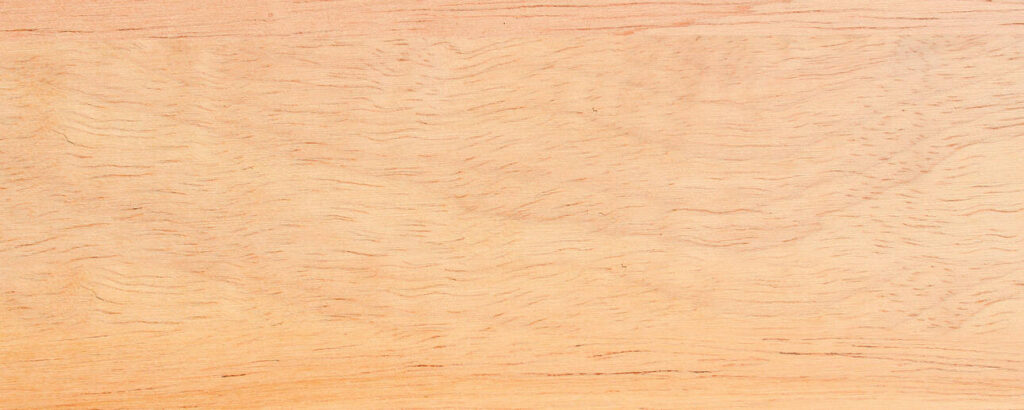
Padauk
Padauk is an exotic African wood known for its unique reddish color and dense texture. It provides a bright, focused tone with plenty of sustain and projection.
Purpleheart
Purpleheart is a stunning wood with a vibrant purple hue. It offers a bright, clear tone with strong mids and highs.
Rosewood
Rosewood is popular for fingerboards due to its density and warm, complex sound. It’s not commonly used as a body wood but can offer a unique tone when paired with the right guitar design.
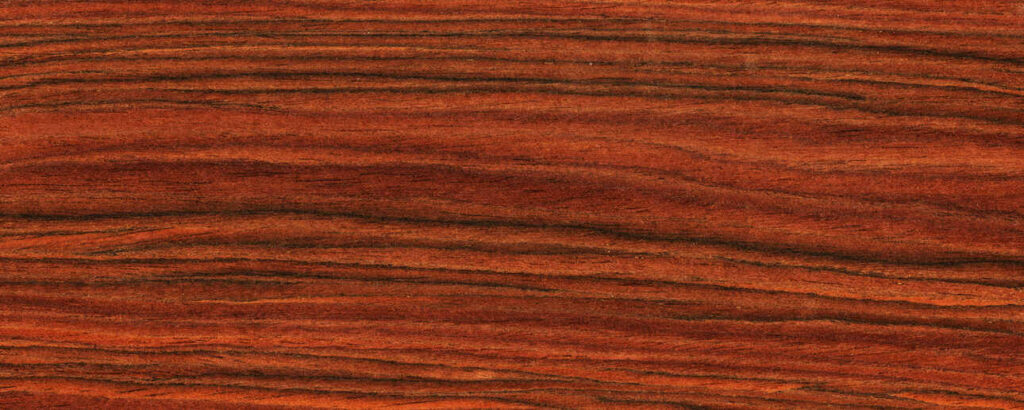
Swamp Ash
Swamp ash is a lightweight wood that offers a well-balanced, resonant tone. Its tight grain pattern provides excellent sustain and punch. It’s suited for blues and rock guitarists.
Sycamore
Sycamore is like maple in appearance and tone. It offers a bright, snappy sound with plenty of definition.
Wenge
Wenge is an African hardwood known for its dark color and tight grain pattern. It provides a rich, focused tone with plenty of sustain and a strong midrange.
Ziricote
Ziricote stands out with complex grains and a warm sound. Its look and even tone make it prized for custom and boutique guitars.
Wood Treatment and Its Impact on Guitar Tone
Aging and Curing
Aging and curing wood right is vital for top-quality tonewood. Over time, the wood dries, and its resins set, improving the guitar’s tone.
Slow, natural drying is best for sound quality. Kiln drying can hurry things, but the tone might suffer if it’s too fast. Choose wood that’s aged well for a better, fuller sound.
Laminates vs. Solid Woods
You’ll find solid woods and laminates when picking a tonewood for your electric guitar. Each affects the guitar’s tone differently:
- Solid woods: Either single pieces or glued together. They give a deeper, more echoing tone than laminates. But solid-body guitars cost more and are more affected by humidity;
- Laminates: These are layers of wood with a fine wood veneer on top. They’re cheaper and handle the environment better, but their tone might not be as vibrant.
The Role of Fretboard Woods
The fretboard wood of an electric guitar matters for how it plays and sounds. Below, I’ll zoom in on top fretboard woods and their effects on playing. Picking wood is personal and based on what you like and how you play.
Ebony
Ebony is a heavy, dark wood known for its smoothness. It’s good for fast playing styles because it’s easy to move your hand on. Ebony also gives a clear tone with tight, low-end, crisp, and high-end response. It fits many music styles.
Maple
Maple is also commonly used wood for fretboards. It’s known for its sharp, crisp tone. Maple has more pronounced, stronger highs and a more distinct sound. Looks-wise, maple can have beautiful grain patterns and a lighter color that stands out on stage.
Ovangkol
Ovankol, an African hardwood, is gaining popularity as a more sustainable substitute for rosewood. It has a warm, rich tone comparable to rosewood but slightly brighter. It has striking grain patterns, giving guitars a one-of-a-kind visual appeal.
Pao Ferro
Pao Ferro is a lesser-known fretboard wood that’s gaining popularity. Tonally, it’s between rosewood and ebony – warm and deep yet still articulate. It’s also durable and provides a comfortable feel under your fingertips.
Padauk
Padauk is an exotic wood with a vivid reddish-orange color that deepens over time. It has a bright, transparent tone with strong bass. Its hardness and durability make it a great and somewhat unconventional choice.
Rosewood
Rosewood has long been a popular guitar wood for its warmth, range, and complex harmonics. It has an even tone – rich low and smooth highs – that suits different playing styles. Rosewood also tends to have intricate and appealing grain patterns.
Walnut
Walnut is a less common yet flexible fretboard wood. Tonally, it mixes rosewood’s warmth and sharpness for a balanced sound fitting many styles. Walnut has pretty grain and provides a comfortable surface for gliding fingers.
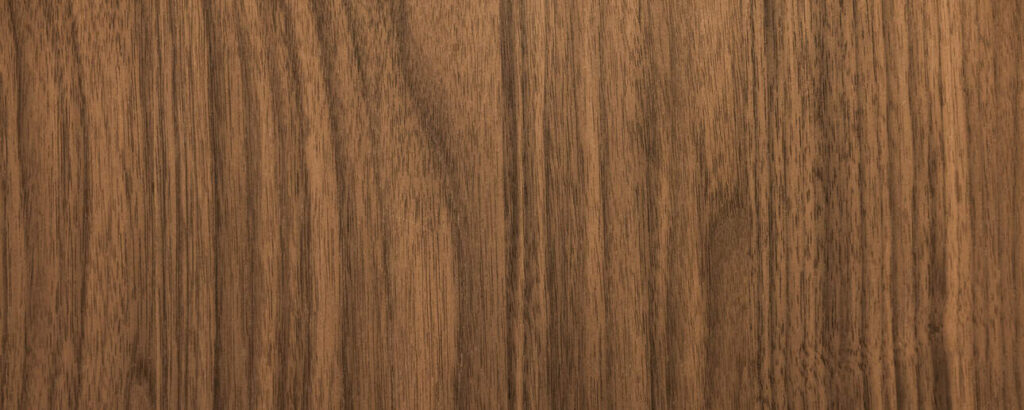
Customizing Tonewood Combinations
Customizing tonewood combinations is one way to get a distinctive electric guitar sound. Different wood combinations greatly affect your guitar’s tone, sustain and playability.
Hybrid Wood Designs
Try hybrid woods to shape your guitar’s tone. Fender, for example, uses different woods for their signature sound. You can do the same. Combine woods in the body, neck, and fretboard for a stunning and superb-sounding personalized instrument.
Consider these popular wood pairs:
- Alder Body & Maple Neck: This classic combination for a warm, resonant tone is favored in Strats;
- Mahogany Body & Maple Top: This pairing gives a rich, warm sound with increased sustain. Commonly found in Les Paul-style guitars;
- Basswood Body & Maple Neck: This combination emphasizes mid-range frequencies. Its balanced tone is used in modern rock and metal guitars.
When customizing wood combinations, think about how the natural properties of each wood will interact with your guitar pickups. For example, a heavy wood like mahogany pairs well with humbuckers to create a thick, sustained tone. On the other hand, a lighter wood like alder might work better with single-coil pickups for a brighter, snappier sound.
When picking tonewoods, match wood properties with pickups. For example, mahogany suits humbuckers for a dense, lasting tone. Alder, on the other hand, fits single coils for a sharp, clear sound.
| TONEWOOD | WEIGHT | TONE | SUSTAIN |
|---|---|---|---|
| Alder | Light | Warm | Medium |
| Mahogany | Heavy | Warm | High |
| Basswood | Light | Balanced | Medium |
| Maple | Medium | Bright | High |
Tonewood Care and Maintenance
Humidity Control
Keep guitar wood healthy with the right humidity. Too much moisture can make the wood swell and warp. Too little can lead to cracking or shrinking. Aim for 45-50%. To achieve this, you can use humidifiers or dehumidifiers. A hygrometer helps you check humidity levels.
You can also use moisture-absorbing packets placed inside your guitar case.
Longevity of Woods
For the longevity of your guitar, pick durable woods. Tonewoods like maple, mahogany, and alder work well for tone and resilience.
Care Techniques
Here are some steps to care for your electric guitar tonewood:
- Cleaning: Clean it with a soft cloth. Use guitar polish for it, not household cleaners. They can damage the wood’s finish;
- Storage: Store your guitar in a dry, stable climate. Protect it from sunlight because this can lead to warping or fading. And use a hardshell case;
- Regular maintenance: Get regular check-ups from a luthier. They’ll handle the truss rod, bridge, and hardware issues.
Sustainability and Alternative Materials
Eco-friendly Tonewood Choices
If you care about sustainability, choose woods from sustainable forests for guitars. The Forest Stewardship Council certifies eco-friendly wood.
Try Oregon Douglas Fir for solid bodies and forest care. Use abundant, renewable maple for necks and bodies. Consider bamboo for a unique sound and look; it grows fast and is plentiful.
Consider sourcing wood from responsible forestry practices when looking for sustainable guitar materials. Several organizations, like the Forest Stewardship Council, certify the sustainability of harvested wood. Some popular eco-friendly tonewood options include:
- Oregon Douglas Fir: Commonly used in solid-body electric guitars. It offers both sustainability and versatility in design. The use of Douglas Fir contributes to responsible forest management;
- Maple: A fast-growing tree species. It makes it an abundant and renewable resource for necks and bodies;
- Bamboo: It’s not a traditional tonewood but produces a unique sound and look. It grows fast, and it’s abundant.
Synthetic and Composite Options
Guitar manufacturers have started using synthetic and composite materials these days. They mimic tonewood and don’t rely on endangered wood species.
Options include:
- Richlite: A high-density paper composite for fingerboards. It’s durable and stable and known for its wear and tear resistance;
- Carbon Fiber: Strong and light, carbon fiber resists climate shifts and looks modern.
The Future of Electric Guitar Tonewoods
Innovation in Wood Selection
New tonewoods and synthetics are reshaping electric guitar sounds and looks. As a player, you can now try guitars made from Flaxwood, a mix of spruce and resin. They offer a tone that differs from traditional tonewood materials.
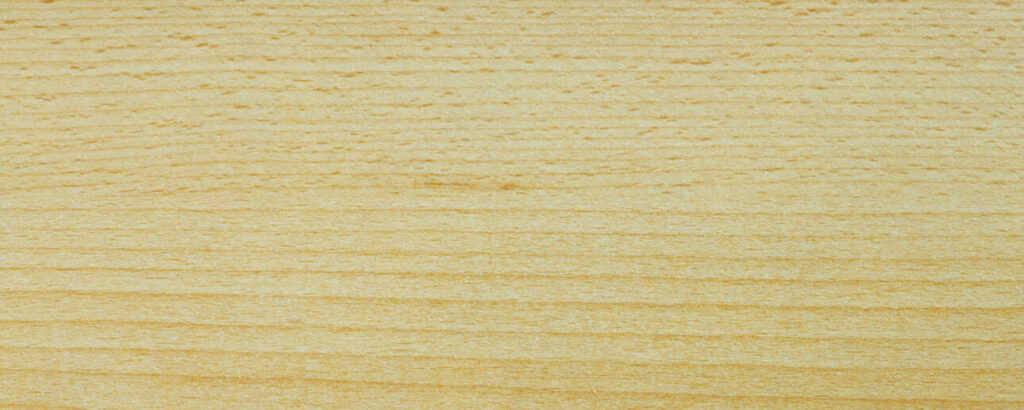
Sustainable materials like fast-growing, light bamboo are also popular. For a twist on the familiar, there’s roasted maple. It’s thermally treated for different tones and more stability.
Impact of Industry Trends
As an electric guitarist, you might want to know how trends affect tonewoods and their use. Environmental issues and tighter rules on woods like rosewood drive innovation, such as the search for alternative materials. As a result, the electric guitar market is moving towards sustainable and eco-friendly materials. It favoris fast-growing or reclaimed woods.
Understanding Wood and Electronics Interplay
The wood of your electric guitar helps shape your tone, but it’s just part of the equation. It works with the electronics – pickups and wiring – to turn string vibrations into an electric signal. This signal gets amplified and molded by your amp and pedals.
Tonewoods interact with pickups for diverse sounds.
For instance:
- Single-coil pickups: Bright and straightforward, but may produce more unwanted noise;
- Humbucker pickups: Warm and rich, effectively canceling out noise;
- P-90 pickups: Mix single-coil and humbucker qualities, offering a unique balance.
Test wood and pickup pairs for your ideal guitar sound.
Guide to Buying
Budget Guitars
If you’re working with a limited budget, don’t worry! Plenty of affordable guitars use decent tonewoods for outstanding sound and playability. Some popular options for budget-friendly tonewoods are basswood, poplar, and agathis.
- Basswood: This lightweight wood is known for its balanced tone, making it a popular choice for many entry-level guitars. According to the Electric guitar sourcebook, basswood is commonly used in Asian-made electric guitars;
- Poplar: This lightweight choice gives a warm sound with steady, balanced frequencies;
- Agathis: This tonewood has a warm, balanced tone similar to mahogany.
Tonewood Comparison Charts
Visual Guide to Wood Properties
Here’s a brief table of common electric guitar tonewoods:
| TONEWOOD | DENSITY | HARDNESS | GRAIN PATTERN | ACOUSTIC PROPERTIES |
|---|---|---|---|---|
| Alder | Medium | Medium | Straight | Balanced, bright |
| Ash | Medium to heavy | Medium | Open-pore, straight | Bright, with strong sustain |
| Basswood | Light | Soft | Straight, uniform | Warm, smooth |
| Mahogany | Medium to heavy | Medium to hard | Straight, interlocked | Warm, rich, with good sustain |
| Maple | Heavy | Hard | Flame, quilt, birdseye, spalted, burl | Bright, with long sustain |
| Swamp Ash | Medium | Medium | Open-pore, straight | Bright, with good resonance |
The table offers a basic tonewood comparison. Individual pieces of wood may differ, and other elements like construction, hardware, and electronics also shape your guitar’s sound and look.
Frequently Asked Questions
What wood gives the best sustain and resonance in an electric guitar body?
Choose mahogany for a warm tone and sustain, alder for balance and brightness, or swamp ash for its lightweight property and bright, resonant tone. It depends on your taste and music style.
What woods are suitable for electric guitar necks?
Maple is suitable for a bright tone and smooth play, mahogany provides a warm tone, and rosewood offers a dense, comfortable fretboard. Neckwood affects your guitar’s feel, so choose one that fits your preferences.
How does wood choice impact a hollow-body electric guitar’s sound?
It can impact in many (subtle) ways. For instance, maple brightens and sustains sound, mahogany warms it, ideal for jazz and blues, and spruce balances tone and dynamics. Pick wood for the sound you want and your playing style.
It’s good to know the characteristics of different tonewoods. Especially when you’re about to order a custom-made guitar.

